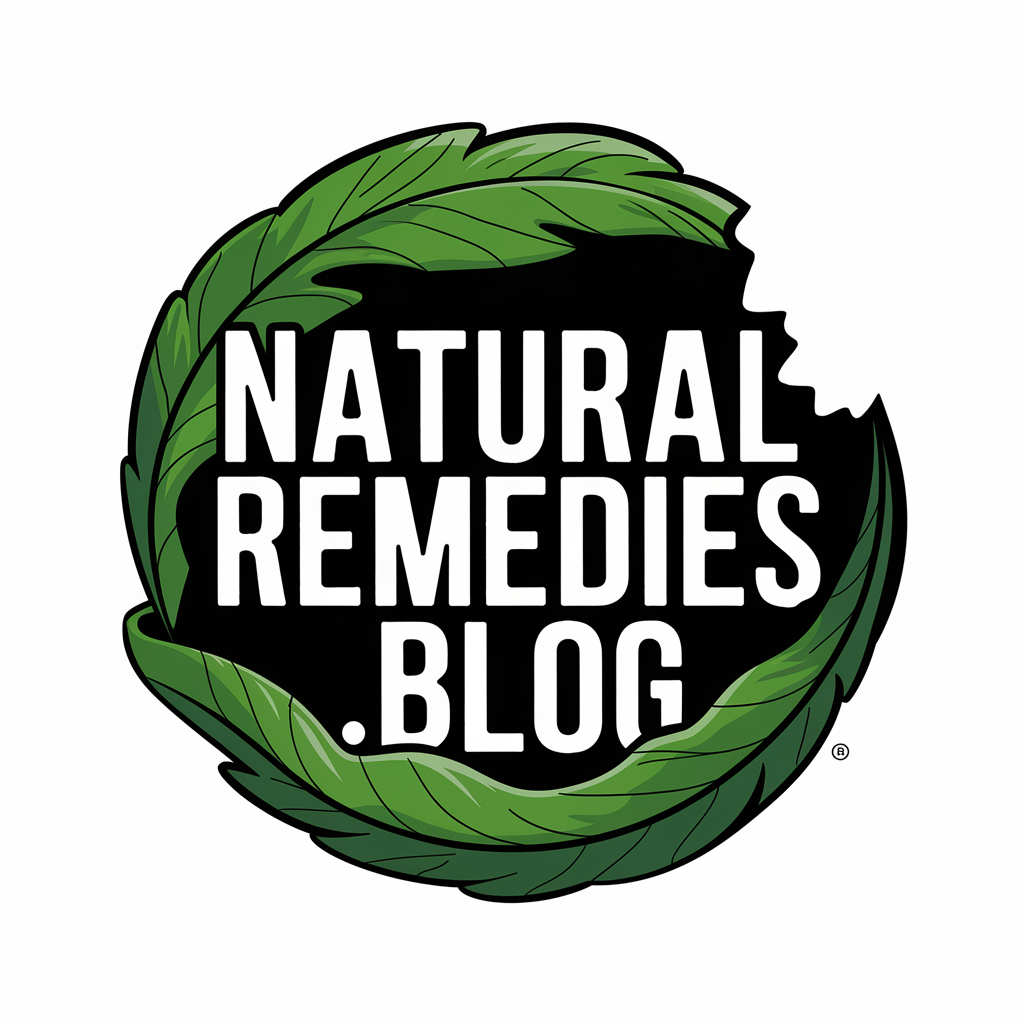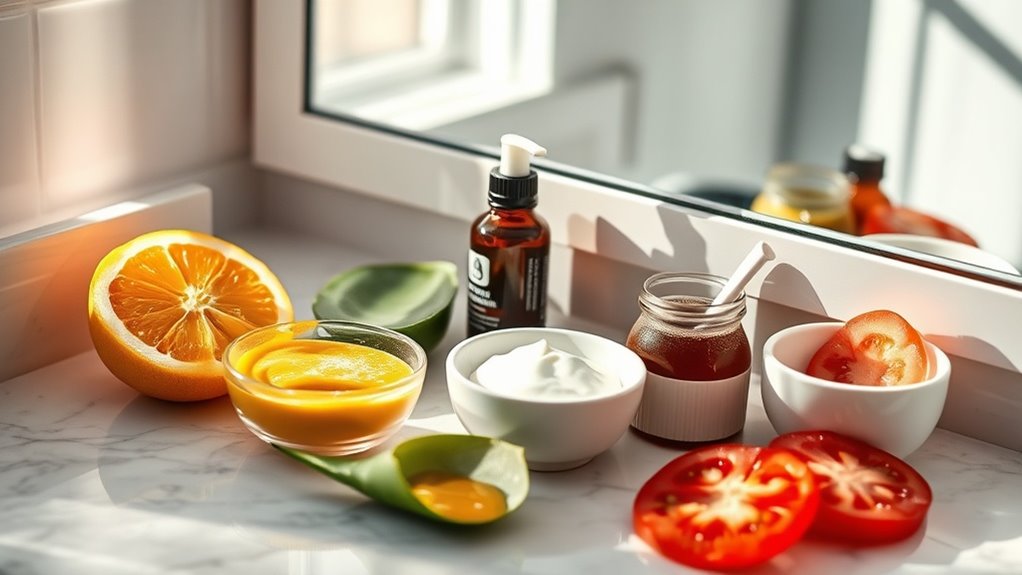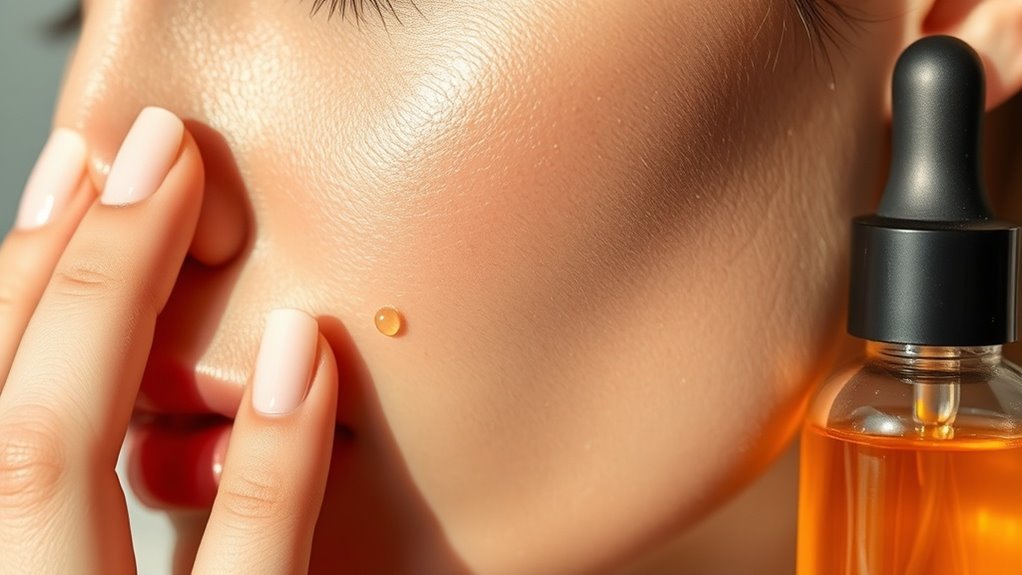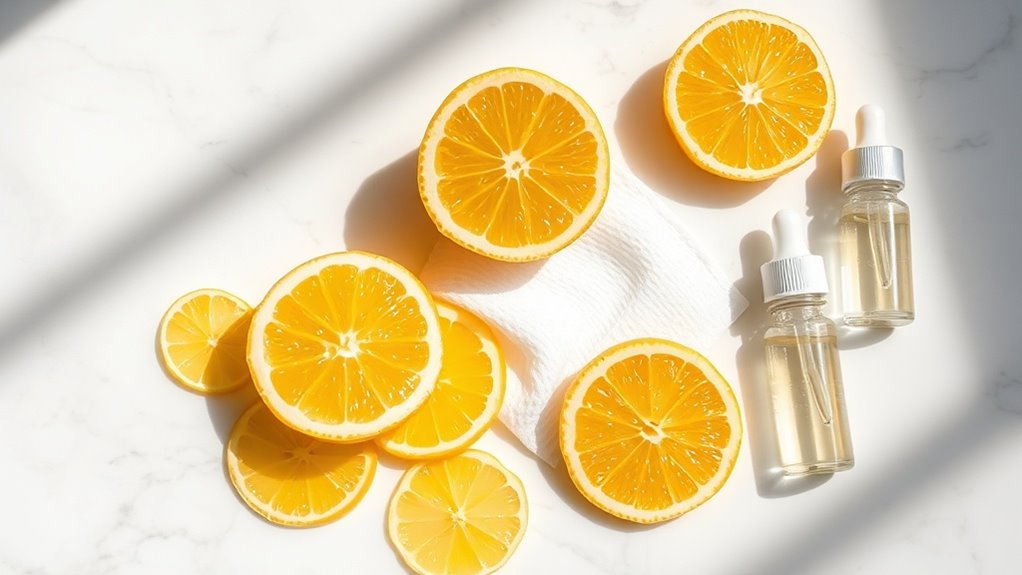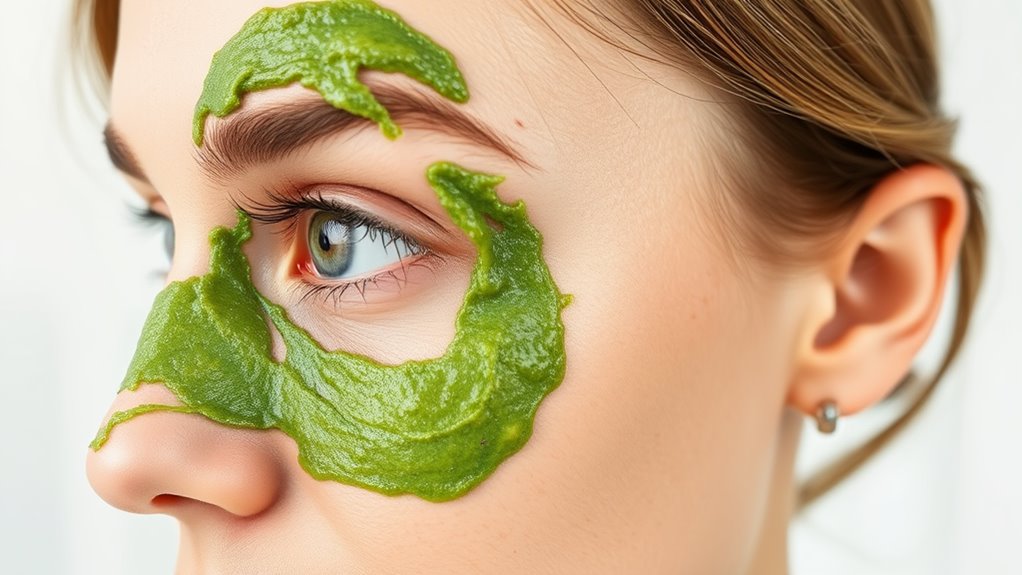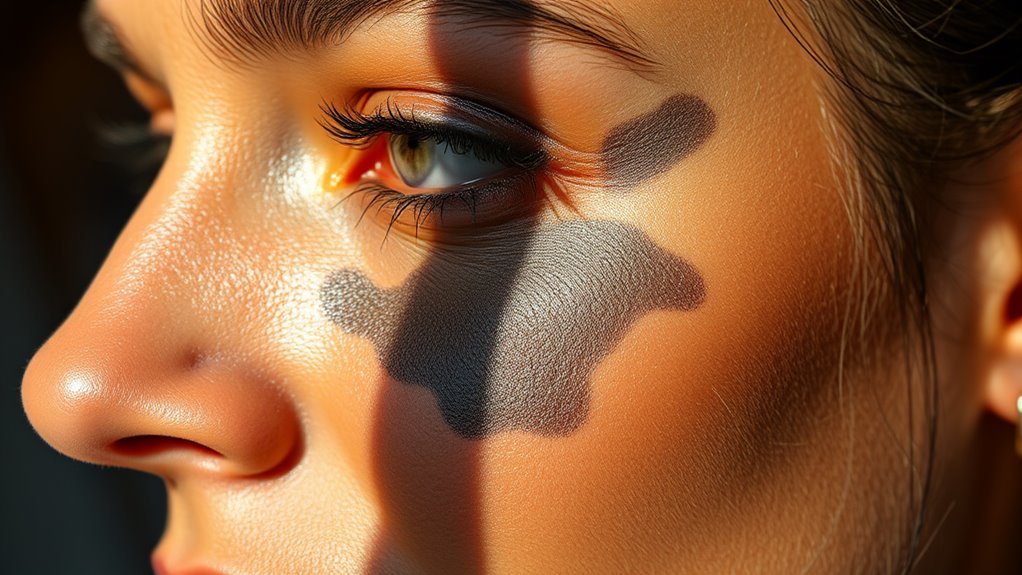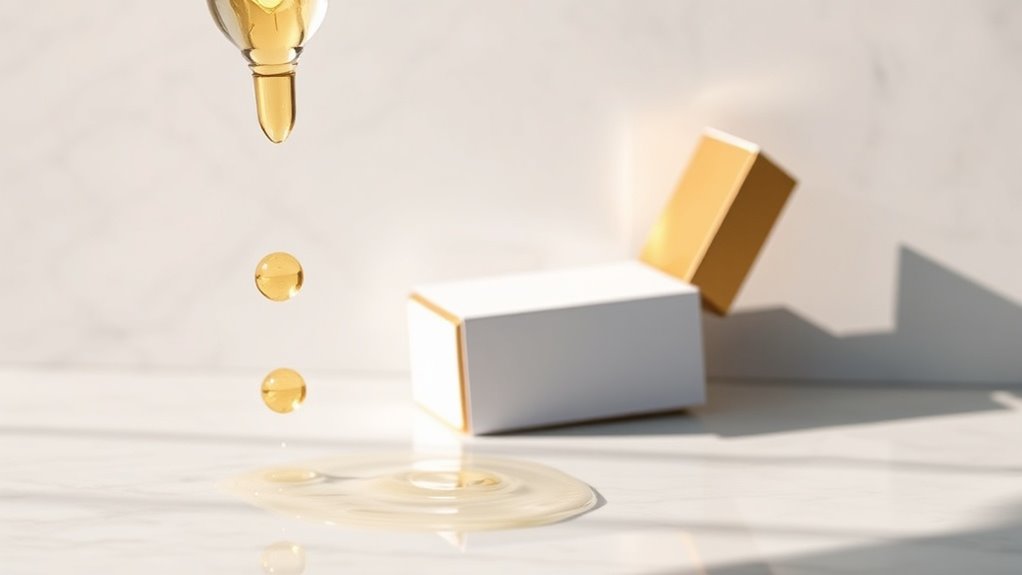What Are 7 Dark Spots Remedies That May Fade Hyperpigmentation.
Wondering why those dark spots won’t fade, no matter what you try? Hyperpigmentation occurs when your skin produces excess melanin in concentrated areas, triggered by sun exposure, inflammation, hormonal changes, or aging. It’s incredibly common—affecting people of all skin types—but it’s also one of the most frustrating skincare concerns because results take time and consistency. The good news? Seven clinically-proven remedies can genuinely fade these spots by targeting melanin production through different pathways in your skin cells. Understanding how each ingredient works will help you choose the most effective treatment for your specific type of pigmentation. Let’s break down what’s really happening beneath the surface and which solutions actually deliver results.
Vitamin C Serums for Brightening Dark Spots and Evening Skin Tone
Vitamin C serums function as potent depigmenting agents by inhibiting tyrosinase, the enzyme responsible for melanin synthesis. You’ll achieve optimal results with L-ascorbic acid formulations at concentrations between 10-20%, applied once daily to affected areas. These dark spots remedies work synergistically with sunscreen to prevent further pigmentation while fading existing discoloration.
You should select stabilized vitamin C derivatives like magnesium ascorbyl phosphate or ascorbyl glucoside if you’re experiencing irritation. Clinical studies demonstrate visible improvement in hyperpigmentation after 8-12 weeks of consistent application. Store your serum in opaque, airtight containers to prevent oxidation, which compromises efficacy. You can enhance treatment outcomes by combining vitamin C with niacinamide or alpha hydroxy acids, though you’ll need to introduce these ingredients gradually to minimize skin sensitivity. Vitamin C derived from citrus fruits neutralizes free radicals while blocking melanin synthesis at the cellular level.
Retinoid Treatments to Accelerate Cell Turnover and Fade Hyperpigmentation
Retinoids accelerate epidermal cell turnover by binding to retinoic acid receptors, which stimulates keratinocyte proliferation and promotes melanin dispersal from the lower epidermis. You’ll find prescription-strength tretinoin (0.025-0.1%) and adapalene most effective for hyperpigmentation treatment, though over-the-counter retinol requires conversion to retinoic acid, reducing potency.
| Retinoid Type | Concentration | Treatment Timeline |
|---|---|---|
| Tretinoin | 0.025-0.1% | 12-24 weeks |
| Adapalene | 0.1-0.3% | 16-24 weeks |
| Retinol | 0.25-1% | 24-36 weeks |
Apply retinoids nightly to clean skin, starting with twice-weekly applications to build tolerance. You’ll need broad-spectrum SPF 30+ during treatment, as retinoids increase photosensitivity. Expect initial irritation, dryness, and temporary darkening before improvement occurs. Combine with hydroquinone or azelaic acid for enhanced depigmentation effects. For severe hyperpigmentation cases, dermatologists may prescribe azelaic acid or combination creams alongside retinoid therapy to maximize melanin reduction.
Kojic Acid Products That Inhibit Melanin Production
Kojic acid blocks tyrosinase activity—the copper-containing enzyme responsible for converting tyrosine into melanin—by chelating copper ions at the enzyme’s active site. You’ll find it most effective at concentrations between 1-4%, though formulations above 2% may cause irritation in sensitive skin types.
Apply kojic acid serums or creams twice daily to hyperpigmented areas after cleansing. You can combine it with hydroquinone, azelaic acid, or vitamin C for synergistic depigmenting effects. Clinical studies demonstrate visible lightening within 4-8 weeks of consistent use.
For enhanced results, you can layer kojic acid with alpha arbutin, which similarly inhibits tyrosinase but with a molecular structure that allows deeper skin penetration and minimal irritation.
Monitor for potential adverse reactions including erythema, contact dermatitis, or paradoxical hyperpigmentation. You’ll need to discontinue use if irritation persists beyond initial adjustment periods. Store products in opaque containers since kojic acid oxidizes rapidly when exposed to light and air.
Glycolic Acid Exfoliants for Removing Pigmented Surface Cells
Glycolic acid functions as an alpha-hydroxy acid that breaks down the bonds between dead, pigmented keratinocytes, accelerating their removal from the stratum corneum. You’ll achieve optimal results with concentrations between 5-10% for at-home use, applied 2-3 times weekly to minimize irritation while maintaining consistent exfoliation.
Proper application requires cleansed skin, a thin layer of product avoiding the eye area, and mandatory broad-spectrum SPF 30+ during daytime hours to prevent photosensitivity reactions. Similar to glycolic acid, lemon juice contains natural alpha-hydroxy acids that provide exfoliating benefits, though with less consistency in concentration compared to formulated products.
How Glycolic Acid Works
One of the most effective alpha-hydroxy acids for treating hyperpigmentation, glycolic acid penetrates the skin’s surface due to its small molecular size. This penetration enables keratolytic action, disrupting corneocyte adhesion and accelerating cellular turnover.
The mechanism involves four critical processes:
- Desquamation enhancement – Dissolves intercellular bonds between keratinocytes, removing melanin-laden cells
- Epidermal remodeling – Stimulates fibroblast activity and collagen synthesis in the papillary dermis
- Melanosome distribution – Reduces transfer of melanosomes from melanocytes to surrounding keratinocytes
- Stratum corneum normalization – Decreases corneocyte cohesion, promoting uniform pigment dispersion
You’ll achieve optimal results with concentrations between 10-20% for home use, while clinical peels utilize 30-70% formulations. The pH level significantly influences efficacy, with lower pH values enhancing penetration but increasing irritation risk.
Optimal Concentration and Frequency
Understanding these mechanisms allows for strategic application protocols that maximize efficacy while minimizing adverse reactions. You’ll achieve optimal results with glycolic acid concentrations between 8-12% for home use, applied 2-3 times weekly.
Professional peels utilize 20-70% concentrations, administered every 2-4 weeks under clinical supervision. Begin with lower concentrations to assess tolerance, gradually increasing as your skin adapts.
Evening application proves most effective, allowing overnight cellular turnover without UV exposure interference. You must incorporate broad-spectrum SPF 30+ daily, as glycolic acid increases photosensitivity.
Treatment duration typically spans 8-12 weeks before visible pigmentation reduction occurs. Monitor for erythema, excessive dryness, or irritation—signals requiring dosage adjustment.
Discontinue use 3-5 days before other exfoliating treatments to prevent barrier compromise. Combination therapy with antioxidants enhances depigmentation outcomes.
Best Application Techniques
Before applying glycolic acid exfoliants, you’ll need to prepare your skin through proper cleansing and pH optimization to maximize penetration efficiency. Remove all makeup, sunscreen, and surface debris using a gentle, non-alkaline cleanser. Pat your skin dry and wait 5-10 minutes to normalize cutaneous pH levels.
Follow this application protocol:
- Start with lower concentrations (5-8%) applied 2-3 times weekly, gradually increasing frequency based on tolerance
- Apply to target areas using cotton pads with sweeping motions, avoiding periorbital and mucosal regions
- Layer products correctly: glycolic acid first, followed by serums containing tyrosinase inhibitors after 10-15 minutes
- Implement strict photoprotection with SPF 30+ broad-spectrum sunscreen daily to prevent post-inflammatory hyperpigmentation
Monitor for erythema, desquamation, or irritation indicating barrier compromise.
Niacinamide Formulations That Reduce Melanin Transfer
Niacinamide inhibits melanosome transfer from melanocytes to keratinocytes by disrupting the protease-activated receptor-2 (PAR-2) pathway, effectively preventing pigment dispersion in the epidermis. You’ll achieve optimal depigmentation results at concentrations between 2-5%, with clinical studies demonstrating significant reduction in hyperpigmentation after 4-8 weeks of consistent application.
This mechanism complements surface exfoliation by addressing the upstream production and distribution of melanin rather than simply removing pigmented cells. For enhanced results, combine niacinamide with vitamin C serum in your daily routine, as this antioxidant-rich approach provides additional melanin inhibition while protecting against UV-induced hyperpigmentation.
How Niacinamide Blocks Melanosomes
When melanocytes produce melanin, they package it into specialized organelles called melanosomes that must transfer to surrounding keratinocytes to create visible pigmentation. Niacinamide interferes with this transfer mechanism through multiple pathways:
- Protease-activated receptor-2 (PAR-2) inhibition – blocks the primary signaling pathway for melanosome uptake
- Keratinocyte phagocytosis reduction – decreases cellular capacity to engulf melanosomes
- Dendrite retraction – limits melanocyte extensions that deliver pigment packages
- Cell membrane receptor modulation – alters surface proteins required for melanosome acceptance
You’ll notice results within 4-8 weeks as existing melanin-laden keratinocytes shed naturally. Clinical studies demonstrate 35-68% improvement in hyperpigmentation when you’re using 2-5% niacinamide formulations. This mechanism targets pigment distribution rather than production, making niacinamide particularly effective for post-inflammatory hyperpigmentation.
Optimal Concentration for Results
Research consistently shows that 4-5% niacinamide concentrations deliver maximum melanosome transfer inhibition without increasing irritation risk. Clinical trials demonstrate that formulations within this range effectively block keratinocyte melanin uptake while maintaining excellent tolerability profiles.
You’ll find that concentrations below 4% produce suboptimal depigmentation outcomes, requiring extended treatment periods. Conversely, concentrations exceeding 5% don’t enhance efficacy but increase the likelihood of adverse reactions, including erythema and pruritus.
When selecting niacinamide treatments, you should prioritize products formulated at 4-5% concentration levels. This therapeutic window optimizes the compound’s ability to interfere with melanosome transfer from melanocytes to surrounding keratinocytes. You can expect visible hyperpigmentation reduction within 8-12 weeks of consistent application.
For enhanced results, you may combine niacinamide with complementary depigmenting agents targeting different melanogenesis pathways.
Natural Lemon Extracts and Their Lightening Properties
Lemon extracts contain citric acid and L-ascorbic acid (vitamin C) at concentrations that demonstrate measurable tyrosinase inhibition, with studies showing up to 40% reduction in melanin synthesis at 5% concentrations. You’ll find these compounds work through multiple mechanisms to address hyperpigmentation.
Clinical applications include:
- Tyrosinase enzyme suppression – blocking melanin production pathways
- Keratolytic action – accelerating cellular turnover at 3-5% concentrations
- Antioxidant protection – neutralizing free radicals that trigger melanogenesis
- pH modulation – creating acidic conditions (pH 2-3) that enhance exfoliation
You should apply standardized lemon extract formulations rather than raw juice, as controlled concentrations prevent phototoxicity and irritation. Treatment protocols typically involve twice-daily application for 8-12 weeks to observe measurable improvements in hyperpigmented lesions. Similar to how vitamin C works in targeted eye treatments, these formulations require consistent application to achieve optimal results in reducing discoloration.
Hydroquinone Alternatives for Safe Long-Term Dark Spot Treatment
While hydroquinone remains the gold standard for melanin reduction, its association with ochronosis and rebound hyperpigmentation has prompted clinicians to identify safer alternatives for extended treatment protocols.
Kojic acid (2-4% concentration) effectively inhibits tyrosinase activity without the systemic absorption concerns. Tranexamic acid, applied topically at 3-5% or administered orally, disrupts melanocyte-keratinocyte interactions through plasminogen pathways. Azelaic acid (15-20%) provides dual benefits: tyrosinase inhibition and anti-inflammatory properties for post-inflammatory hyperpigmentation.
Cysteamine cream demonstrates comparable efficacy to hydroquinone in clinical trials without adverse effects. Retinoids accelerate melanin dispersion through enhanced cellular turnover, making them essential adjunctive agents. Vitamin C (L-ascorbic acid 10-20%) interrupts melanogenesis while providing antioxidant protection.
These alternatives allow you to maintain prolonged treatment regimens without hydroquinone’s limitations.
Frequently Asked Questions
How Long Does It Take to See Results From Dark Spot Treatments?
You’ll typically notice improvement in 4-12 weeks with consistent topical treatment use. However, deeper hyperpigmentation may require 3-6 months of dedicated therapy. Your results depend on pigmentation severity, treatment type, and strict adherence to your regimen.
Can Dark Spots Come Back After Successful Treatment?
Yes, you’ll find dark spots can return after treatment if you don’t protect your skin from UV exposure, experience hormonal changes, or sustain new inflammation. You must maintain preventive measures and continue using sun protection daily.
Should I Wear Sunscreen While Treating Hyperpigmentation?
Yes, you’ll need broad-spectrum SPF 30+ sunscreen daily while treating hyperpigmentation. UV exposure triggers melanin production, counteracting your treatment’s effectiveness. Sunscreen prevents further darkening and protects newly lightened skin from recurring pigmentation during your treatment regimen.
Are Dark Spot Remedies Safe During Pregnancy or Breastfeeding?
Most dark spot treatments aren’t safe during pregnancy or breastfeeding. You should avoid retinoids, hydroquinone, and chemical peels. However, you can safely use azelaic acid, vitamin C, and glycolic acid under your dermatologist’s guidance.
Can I Combine Multiple Dark Spot Treatments at Once?
You can combine treatments, but you’ll need careful layering to avoid irritation. Apply vitamin C serums in the morning, retinoids at night, and use hydroquinone separately. Always introduce products gradually and maintain consistent sunscreen use daily.
